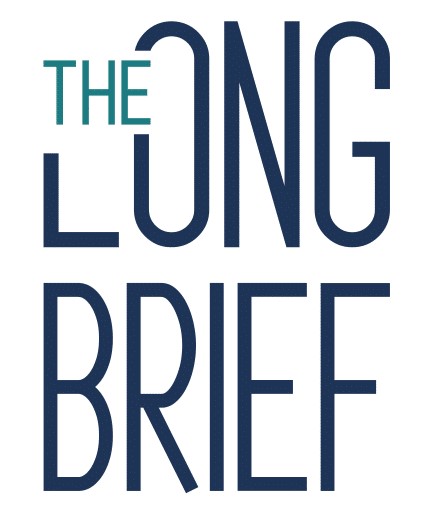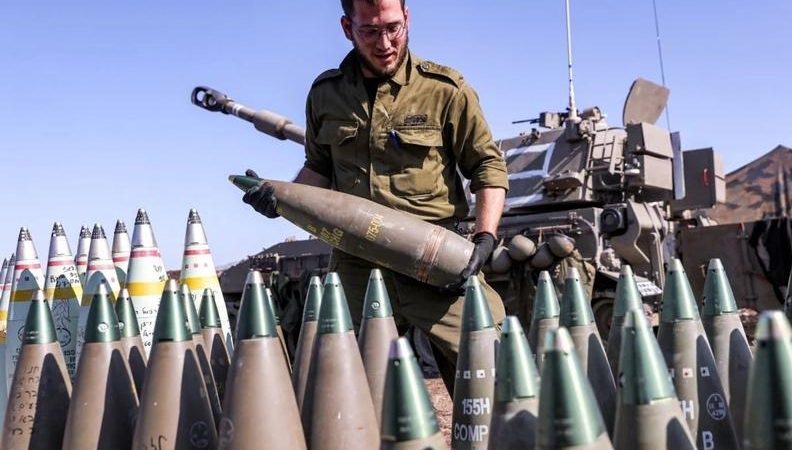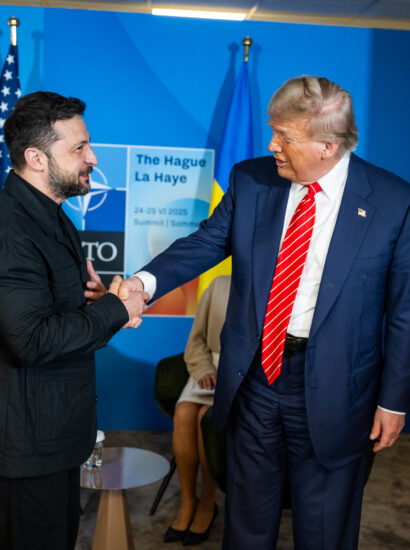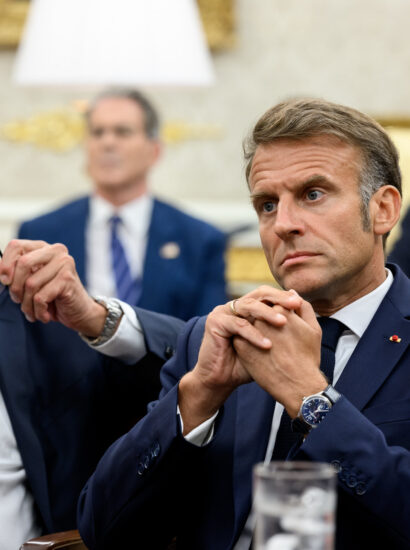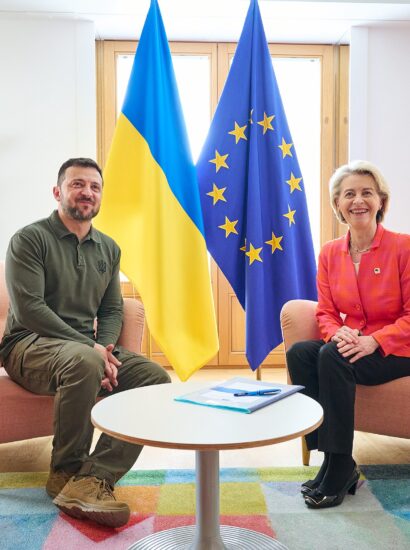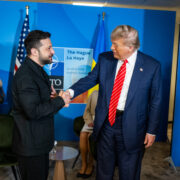“By many countries, the arms are bought for defense – if that were true, they wouldn’t need any weapons. If my neighbor buys weapons, therefore I feel threatened, I need to buy them as well. More weapons may cause accidents and incidents. For example, the weapons floating in the South-China Sea can go out of control,” Siemon Wezeman, the Senior Researcher of Arms Transfers Programme at the Stockholm International Peace Research Institute (SIPRI), stated at the online event titled Security at Arm’s Length: Global Arms Trade Implications for Peace, Security, and the Economy.
The joint discussion was held by the Stockholm International Peace Research Institute (SIPRI) and the Stimson Center about the recent trends in the global arms trade and the potential implications of arms transfers around the world. The other panelists were Dr. Mathew George, Director of the Arms Transfers Program at SIPRI, and Sarah Yager, Washington Director of Human Rights Watch. The program was moderated by Rachel Stohl, Vice President and Director of the Conventional Defense Program at Stimson Center.
Overlook of the Global Arms Business
Since 1950, the USA and Russia (or the Soviet Union before 1992) have consistently been by far the largest suppliers. However, in 2018–22, the USA consolidated its position as the world’s biggest arms supplier, and the gap between it and Russia widened. In 2018–22, the USA’s arms exports were 14 percent higher than in 2013–17, and its share of the global total increased from 33 to 40 percent. In contrast, Russia’s arms exports decreased by 31 percent, and its share of the global total dropped from 22 to 16 percent. Known plans for future deliveries strongly indicate that the gap between the USA and Russia will increase.
While SIPRI data on arms transfers does not represent their financial value, many arms-exporting states publish figures on their arms exports’ financial value. Based on this data, SIPRI estimates that the total value of the global arms trade was at least $127 billion in 2021 (the most recent year for which financial data is available), compared to $95 billion (in constant 2021 US dollars) in 2012.
The total value of the arms trade in 2021 was about 0.5 percent of the total value of global international trade in 2021.
In the first half of the online seminar, the participants reviewed the newly released SIPRI arms transfer data, and they examined the current state of play in global arms trade and highlighted the recent arms transfer trends and their impacts.
According to the report Trends in International Arms Transfers, 2023, the imports of major arms by states in Europe increased by 94 percent between 2014–18 and 2019–23, while the global volume of international arms transfers decreased marginally by 3.3 percent.
Overall, arms transfers to all other regions decreased. However, states in Asia, Oceania, and the Middle East continued to import arms in much larger volumes than those in Europe. Nine of the ten biggest arms importers in 2019–23, including the top three of India, Saudi Arabia, and Qatar, were in Asia and Oceania or the Middle East. Ukraine became the fourth biggest arms importer globally after receiving major arms transfers from over 30 states in 2022–23.
On the other hand, the five largest exporters are the United States, France, Russia, China, and Germany. Arms exports by the United States, the world’s largest arms supplier (with 42 percent of the total share), rose by 17 percent between 2014–18 and 2019–23, while those by Russia fell by more than half (53 percent). France’s arms exports grew by 47 percent, and it moved just ahead of Russia to become the world’s second-largest arms supplier.
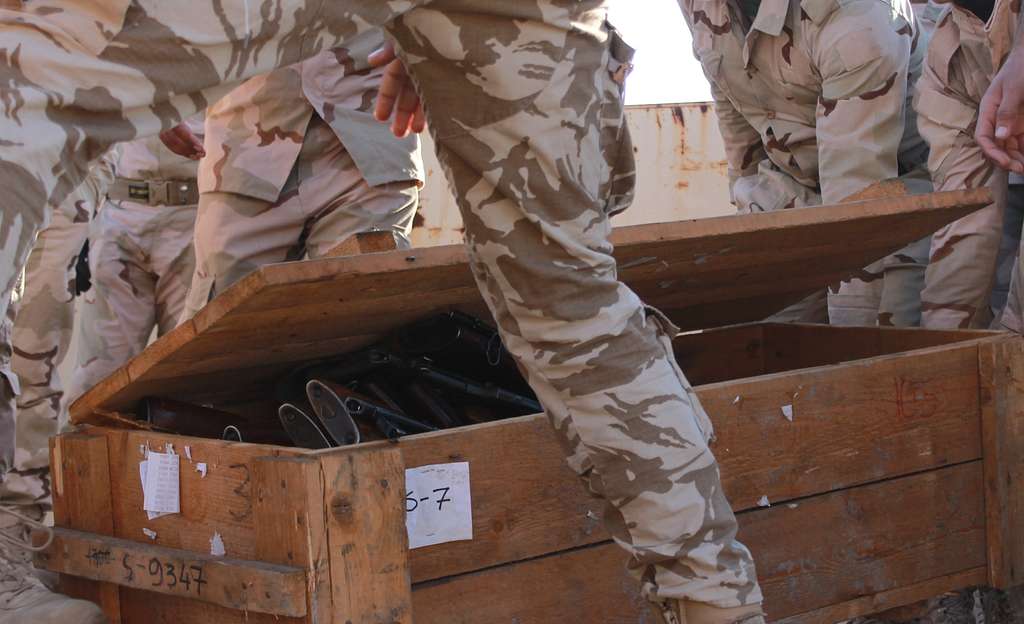
Soldiers from the Iraqi Security Forces unload a shipment of over 1,000 AK-47’s that were donated from coalition partners to assist in their fight against ISIL in 2015 (Photo: Defense Visual Information Distribution Service)
The USA is Still the King of Kings in Weapon Sales
The USA and Western Europe together accounted for 72 percent of all arms exports in 2019–23, compared with 62 percent in 2014–18. The USA delivered major arms to 107 states in the last five years. That volume was 282 percent higher than that of France. The main destination of Washington’s export definitely is the Middle East. Four countries (Saudi Arabia, Qatar, Kuwait, and Israel) are among the top 10 recipients of US weapons, with a share of more than 31 percent of all US arms exports. Rachel Stohl underlined that “the global arms trade played and will continue to play in world events.” She added:
“In the Middle East, Arms exports from the United States and others have played a critical role in enabling Israel’s military campaign in Gaza, which has created a devastating humanitarian crisis and invited violent reprisals from the Houthis.”
The vice president also recalled that in Ukraine, the US and European arms transfers have so far allowed Kyiv to resist the full-scale invasion of Russia, now in its third year.

Rachel Stohl, Vice President, Stimson Center and Director of the Conventional Defense Program Source: Stimson Center
According to the report’s key findings, Asia and Oceania are also responsible for a large amount of weapon flow from the United States. Japan, Australia, and South Korea are also members of the top 10 recipients of US arms. Each of these states increased their weapon purchase volume since 2019, which was mainly driven by a perception of a growing threat from China. Interestingly, the latter two also make the top 20 of the largest exporters. “This is something new. In this region, the US was not the largest supplier; it was Russia that has fallen away,” claimed Siemon Wezeman from SIPRI. Asia and the ocean have been the largest import regions since the Cold War. By far, the top six importers in the last five years have come from the region,” elaborated the researcher.
The deliveries of combat aircraft typically make up a significant part of the USA’s total arms exports. It delivered 420 combat aircraft in 2019–23. Of these, 249 were advanced F-35 aircraft, which were transported to a total of 10 states and accounted for 24 percent of all US arms exports.
State of Play in Europe
A total of 28 percent of US arms exports went to states in Europe in 2019–23, which was up from 11 percent in 2014–18. US arms exports to the region increased by just over 200 percent between the two periods. Ukraine accounted for 4.7 percent of all US arms exports and 17 percent of those to Europe.
France delivered major arms to 64 states in 2019–23, but India was by far the largest recipient, accounting for 29 percent of French arms exports.
The bulk of France’s arms exports in 2019–23 went to states in Asia and Oceania (42 percent of arms exports) and the Middle East (34 percent). France has been trying to expand its arms sales to other European states for many years; however, its exports to states in Europe in 2019–23 accounted for only 9.1 percent of its total arms exports. More than half of its European arms exports (53 percent) went to Greece, mostly made up of transfers of 17 Rafale combat aircraft.

Dr. Matthew George, Director, Arms Transfers Program, SIPRI Source: SIPRI
Arms exports by Germany made up 5.6 percent of the global total in 2019–23. They were 14 percent lower than in 2014–18. States in the Middle East received the largest share of all German arms exports in 2019–23 (39 percent), followed by states in Asia and Oceania (28 percent) and Europe (25 percent). Italy accounted for 4.3 percent of the world’s arms exports in 2019–23. Its arms exports were 86 percent higher in 2019–23 than in 2014–18. A total of 71 percent of Italian arms exports went to the Middle East. The United Kingdom and Spain are also in the top ten exporters, but their shares have all (in the case of the UK significantly with 14 percent) dropped.
What About China and Russia?
According to many countries, China is the main perceived threat, and it’s actually growing stronger because China is becoming a growing military power. Many countries do not see the end of China’s territorial and political ambitions. China accounted for 5.8 percent of total global arms exports in 2019–23. Its arms exports decreased by 5.3 percent between 2014–18 and 2019–23. The bulk of Chinese arms exports (85 percent) went to states in Asia and Oceania, followed by states in Africa (9.9 percent). China delivered major arms to 40 states in 2019–23, but well over half of its arms exports (61 percent) went to just one state—Pakistan. Not surprisingly, Russian arms exports fell by 53 percent between 2014–18 and 2019–23. The decline has been rapid over the past five years, and what is more shocking is that the drop has nothing to do with the Russo-Ukraine war.
“The decline in Russian arms exports started before the full-scale invasion of Ukraine in 2022,” said Pieter Wezeman, tracking the decline back to 2019 while adding that sanctions related to Moscow’s brutal war on Ukraine appear “to have further contributed to the increase in French arms exports.”
While Russia exported major arms to 31 states in 2019, it exported to only 12 in 2023. States in Asia and Oceania received 68 percent of total Russian arms exports in 2019–23, with India accounting for 34 percent and China for 21 percent.

Siemon Wezeman, Senior Researcher, Arms Transfers Programme, SIPRI Source: SIPRI
Rest of the World
The largest share of arms transfers goes to Asia, with India as the world’s top arms importer. Some 37 percent of major arms transfers in 2019–23 went to states in Asia and Oceania, the largest share of any region but a slight decrease from 41 percent in 2014–18. Despite an overall 12 percent decline in arms imports for the region, imports by several states increased markedly. For the first time in 25 years, the USA was the largest arms supplier to Asia and Oceania. The USA accounted for 34 percent of arms imports by states in the region, compared with Russia’s 19 percent and China’s 13 percent.
India was the world’s top arms importer. Its arms imports increased by 4.7 percent between 2014–18 and 2019–23.
Although Russia remained India’s main arms supplier (accounting for 36 percent of its arms imports), this was the first five-year period since 1960–64 when deliveries from Russia (or the Soviet Union prior to 1991) made up less than half of India’s arms imports. Pakistan also significantly increased its arms imports (+43 percent). Pakistan was the fifth largest arms importer in 2019–23, and China became even more dominant as its main supplier, providing 82 percent of its arms imports. Two of China’s East Asian neighbors increased their arms imports, Japan’s by 155 percent and South Korea’s by 6.5 percent. China’s own arms imports shrank by 44 percent, mainly because they substituted imported arms—most of which came from Russia—with locally produced systems.
The Moral Issues Regarding the Arms Trade
“Weapons and arms sales are not always a bad thing, if you are a policy maker, and you look at deterrence, defense. In the context of Russian threat to EU we need this deterrence, or in the case of Israel’s Iron Dome which saved countless lives,” stressed the usefulness of armaments Sarah Yager, the Washington Director of Human Rights Watch.
Yager said that a defensive weapon system is inevitable and that having weapons also increases space for negations and diplomacy. But apart from these good sides, there are more bad ones. Regarding that, the Director of HRW asked two questions: 1) Are my arms exports likely to increase human rights abuses? 2) Is there a short or long-term success in building an alliance with arms trade?

Washington Director at Human Rights Watch Source: HRW.org
“To answer the first question is an extraordinarily difficult thing,” said Sarah Yager. She mentioned the Biden administration’s Conventional Arms Transfer Memorandum was created in February 2023. “According to this document any unit of military force committed gross violations of human rights then they will no longer receive US assistance,” Yager added.
Turning to the second question, the director explained: “There are ways of creating alliances with the US, the one is arms export. Typical examples are Saudi Arabia, India, and China. There is no algebraic equation, and there is no particular calculus to decide the question.”
In order to create these alliances and sell weapons, there are countries where the United States is overlooking some significant human rights abuses and how these governments behave towards their own population.
Yager also found it problematic that the people have no say in where their government sends these weapons. For example, the UAE is fueling a genocide in Sudan.
In her presentation, she pointed out another serious issue: what happens to arms and weapons after five or ten years. Some states, like Ukraine, offer insurance over the use of arms because they are interested in maintaining that relationship with the United States and in living up to those assurances. But only a few countries do the same.
The HRW director mentioned the case of Israel in the current conflict in Gaza:
“The U.S. unconditional support to Israel and Gaza is undermining anything that is on paper because most of the evidence points to Israel having violated in some way international law and most likely with US weapons. We have evidence of that from Amnesty International,” concluded Sarah Yager.
